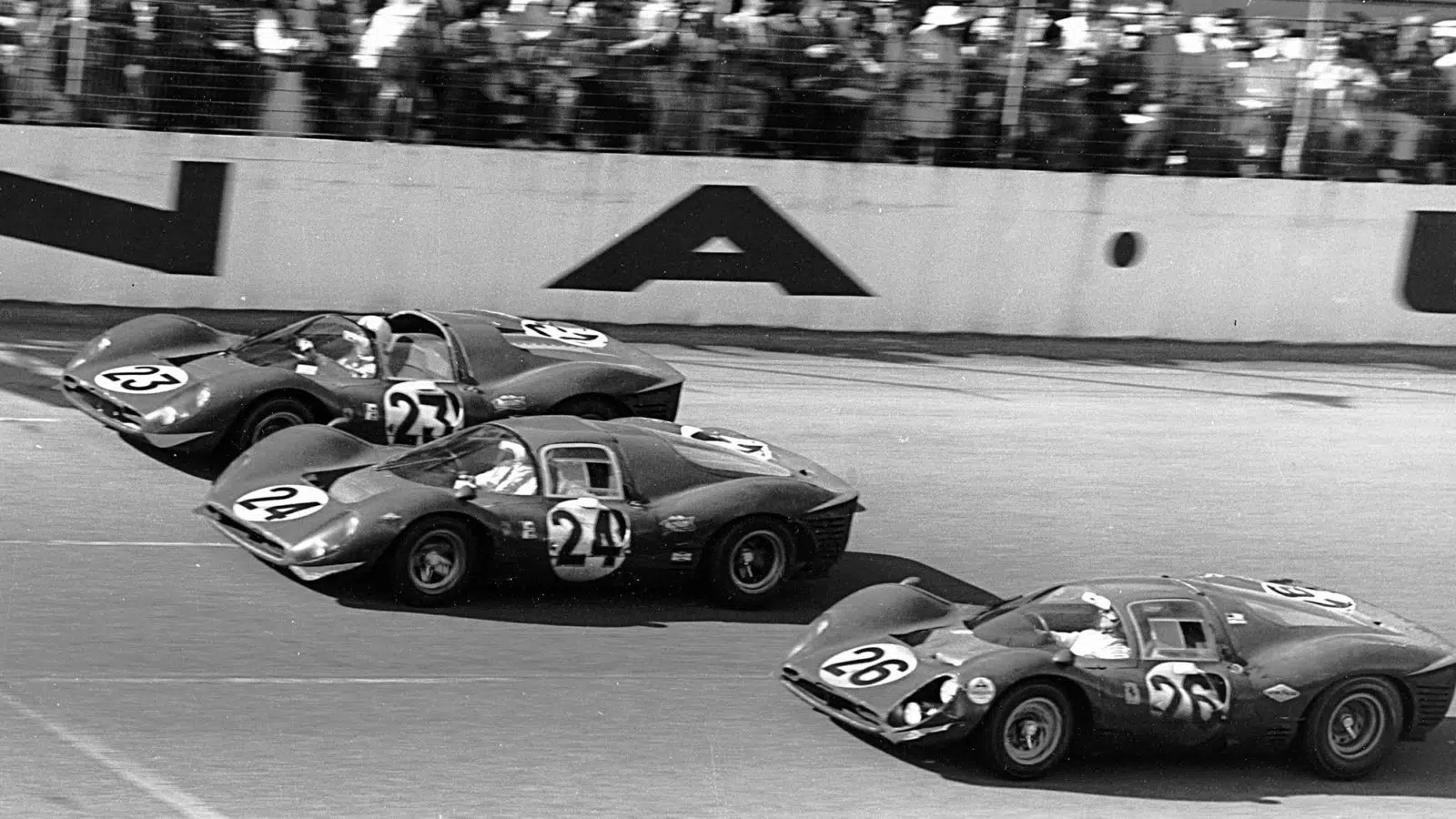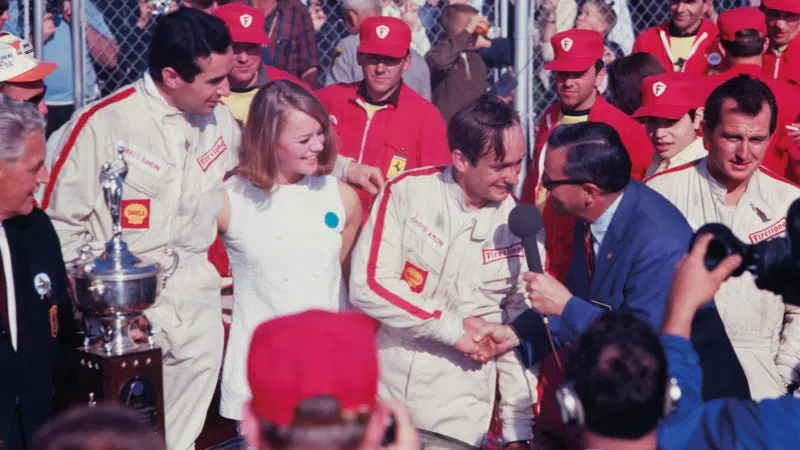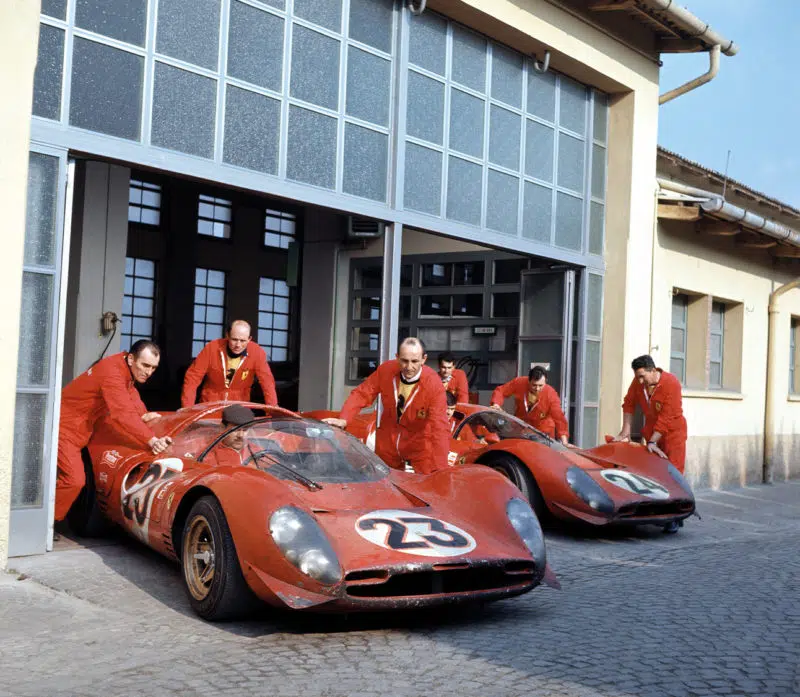Sweet revenge of Ferrari's 1967 Daytona 24 Hours win
At the Daytona 24 Hours in 1967 Ferrari learned that revenge is a dish best served cold, then upended into your rival’s lap...

Ferraris cross the line three abreast at the 1967 Daytona 24 Hours and Enzo's point is made; No23 is a works P3/4, with 24 being a P4. No.26 is a near-identical NART 412P
ISC Images & Archives/Getty Images
Why was this race so important that its name was informally given to Ferrari’s next supercar and, 55 years later, now officially bequeathed upon the SP3? Revenge, pure and simple.
For the first half of the decade, Ferrari had regarded prototype sports car racing as its own domain. Then Ford had arrived with the GT40. And while Ferrari ruled supreme through 1964 and remained the dominant force in 1965, by 1966 the 7-litre Ford MkIIs had humbled Ferrari at Le Mans which, being in Europe and having won seven of the previous eight races there, was regarded as essentially a home fixture. The Americans took every place on the podium while not one of the Scuderia’s cars even finished the race.
The very next time the teams would meet would be at the Daytona 24 Hours in February the following year.
“And then the Fords started to fall one after the other”
Ferrari only brought two cars, a brand new P4 for Mike Parkes and Ludovico Scarfiotti and a P3 from the previous year updated to P4 specification for Lorenzo Bandini and Chris Amon. They faced no fewer than six factory supported MkIIs, split equally between the Shelby American and Holman Moody squads. It looked the tallest of tall orders.
But Ferrari was determined to make amends for the Le Mans humiliation and do to Ford in America what it had done to Ferrari in Europe. The cars were meticulously prepared, as were their drivers, who did copious testing before the race.

Winning drivers Chris Amon, centre, and Lorenzo Bandini, left
Bob D’Olivo/Getty Images
It has been said that this was a race not so much won by Ferrari as lost by Ford, but that seems to sell the Scuderia somewhat short. The race was led at first by Phil Hill in the new and innovative Chaparral 2F, followed by a gaggle of Fords with the Ferraris a distance behind. But by the time the Chaparral retired with accident damage with more than 20 of the 24 hours to run, it was a Ferrari, not a Ford, that eased into the lead with its sister in third and only AJ Foyt’s Ford between them.
And then the Fords started to fail, one after the other succumbing to gearbox failure, which were replaced until there were no more to go round. Just one of the six made it to the flag.
By contrast, Ferrari showed how much it had learned since the drubbing at Le Mans. As János Wimpffen puts it in his masterly book Time and Two Seats, “The two factory P4s won as endurance races should be won — never was a hood raised on either car.”

The race-worn works Ferraris back at Maranello after their Daytona 24 Hours success
Klemantaski Collection/Getty Images
In the famous finishing line photograph there is a third Ferrari, which while appearing almost identical was neither a P3/4 like the winner or the P4 in second place. It was instead a 412P, which was what Ferrari called the P3/4s delivered to its favoured customers, in this case Luigi Chinettiís North American Racing Team. Some idea of just how dominant was this victory for Ferrari is provided by the fact that while the NART 412P finished 29 laps behind the winner, that was still enough to secure the final podium position, 18 laps clear of the works Porsche 910 in fourth. The victory was as total as the revenge was sweet.
At the big races that followed, Ferrari skipped Sebring where Ford’s new MkIV triumphed, while Ford swerved Monza where the P4s swept to an unopposed victory. Indeed they’d meet just once more before rule changes for 1968 rendered both Ford and Ferrari prototypes obsolete. It was at Le Mans where Ferraris took two of the three podium positions; but the one that mattered belonged to Ford.
